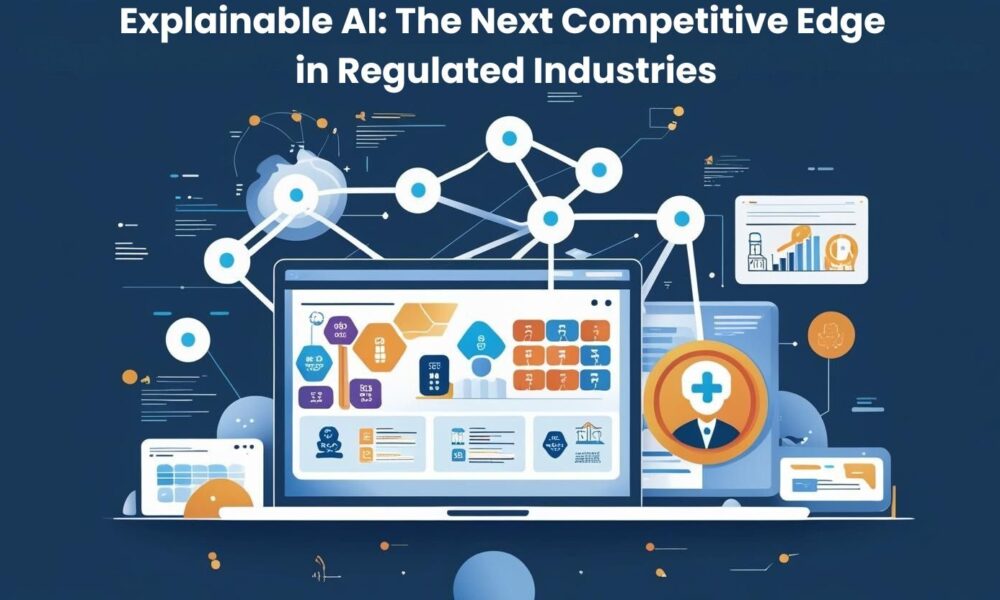Explainable AI: The Next Competitive Edge in Regulated Industries

By Sarvendra Aeturu
In today’s rapidly evolving digital economy, artificial intelligence (AI) plays a crucial role in transforming how organizations operate across sectors. From diagnosing patients to approving loans and assessing legal risk, AI systems are making decisions that deeply affect human lives. But while AI has delivered impressive gains in speed and accuracy, one critical question is gaining urgency: can we understand how these systems make decisions?
This is where explainable AI (XAI) enters the conversation. As a Salesforce Technical Architect with over a decade of experience designing secure, scalable systems for government, healthcare, and finance, I’ve seen firsthand that performance is not enough trust is just as vital.
The Stakes Are High
In industries like healthcare, financial services, and criminal justice, explainability isn’t a nice-to-have, it’s a legal and ethical imperative. Doctors must justify AI-driven diagnoses. Banks need to explain why a customer was denied a loan. Courts can’t base sentencing recommendations on opaque algorithms. In each case, AI systems must be auditable, transparent, and fair.
A 95% accurate model is useless if its logic can’t be explained or trusted. In fact, opaque AI can introduce systemic bias, jeopardize compliance, and even erode public trust. According to a 2023 McKinsey report, 65% of executives cite lack of AI transparency as a major barrier to enterprise adoption.
Bridging the Gap: Interpretable AI
There are two primary approaches to making AI interpretable:
1. Intrinsic interpretability: Some models, like decision trees or linear regression, are designed to be understandable from the start. They show clearly how different factors contribute to a result.
2. Post-hoc explanations: For complex “black-box” models (like deep neural networks), tools like LIME and SHAP help explain predictions after the fact. These techniques highlight which input features influenced the AI’s decision the most.
Both methods have pros and cons . Intrinsically interpretable models are often easier to trust but may not capture complex patterns. Post-hoc explanations can decode high-performing models but require caution to avoid oversimplification.
Real-World Applications
1. In healthcare, explainable AI helps radiologists understand why an algorithm flagged a chest scan as showing signs of pneumonia. By highlighting the exact region of the image that informed the decision, doctors can verify and trust the result.
2. In finance, SHAP values are used to justify credit scores, helping lenders comply with fair lending laws. Customers get a breakdown of why their application was rejected, fostering transparency and accountability.
3. In criminal justice, risk assessment tools must be explainable to ensure decisions around bail or parole aren’t based on hidden biases. Algorithms used in these areas are now under strict scrutiny.
The Human Element
Even the best explanations can fall flat if they don’t match how people think. Human-centered design in AI focuses on delivering insights in ways users can actually understand. For instance, a judge or doctor may not need every line of code, but they do need clear, context-relevant reasons they can defend.
As the AI industry matures, user-centric explanations will be as important as technical accuracy. Think visual dashboards, natural language summaries, and interactive breakdowns that adapt to each stakeholder’s needs.
Looking Ahead
Explainable AI is no longer a niche field; it’s a strategic priority. Regulatory bodies across the globe are enacting laws that require AI transparency, from Europe’s GDPR to proposed U.S. legislation on algorithmic accountability.
Organizations that embrace interpretable AI today will be better positioned to meet compliance standards, reduce legal risk, and most importantly build trust with the people they serve.
AI is here to stay. Making it understandable is the next big leap.
“A 95% accurate model is useless if its logic can’t be explained or trusted.”
Sarvendra Aeturu is a Salesforce Technical Architect with a focus on ethical, scalable enterprise solutions. He has led cloud transformations across healthcare, government, and finance, and is a thought leader in the application of AI in CRM systems.




